Summer wildflowers are blooming in the desert right now
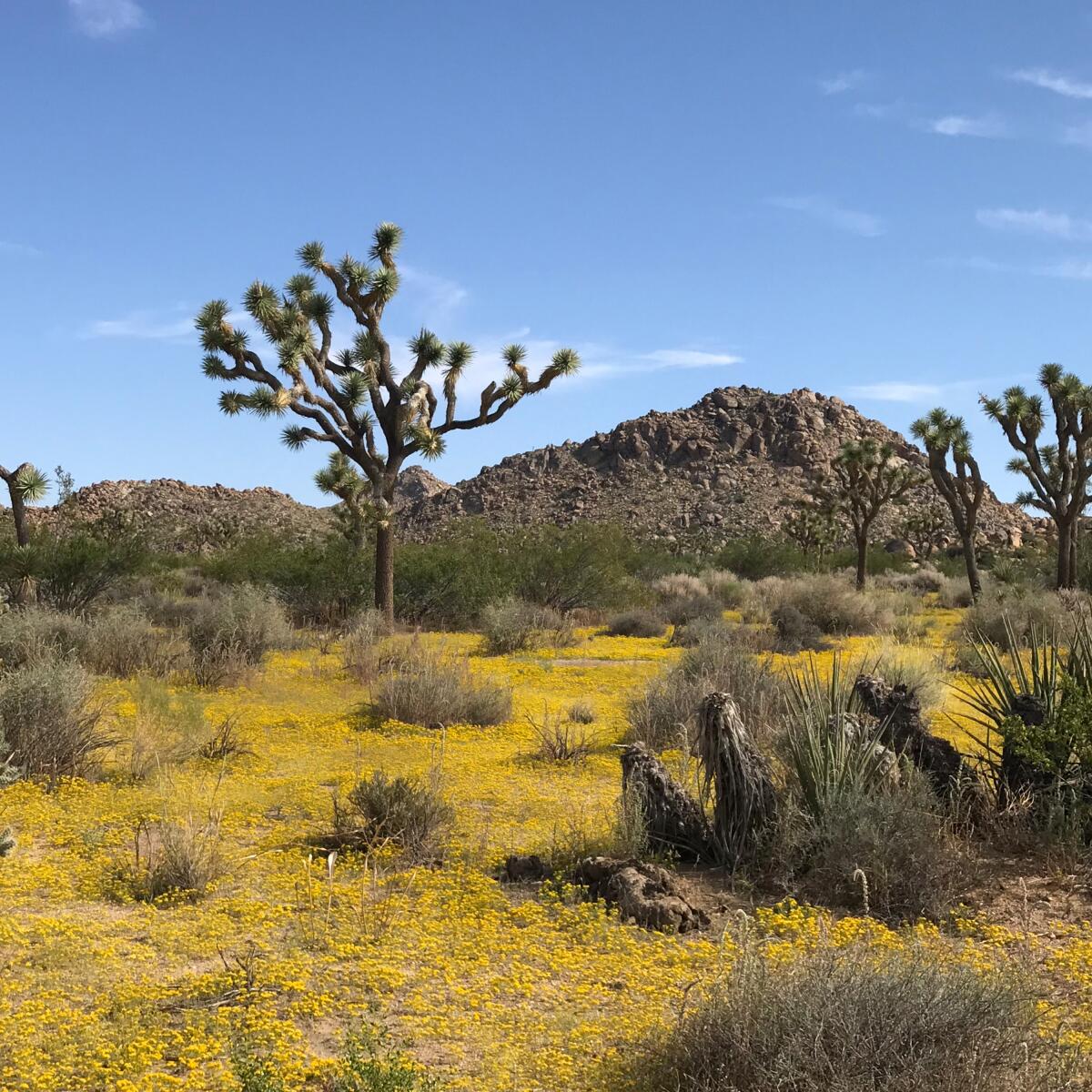
- Share via
I was so busy watching wildfires march across California that I almost missed this: Wildflowers are blooming in the desert. Really. “Something extraordinary has happened in Joshua Tree this summer,” the Mojave Desert Land Trust’s newsletter reported. “After months of drought, monsoonal rains have resulted in an incredible bloom of summer annual wildflowers.”
You heard right, summer annuals, such as yellow carpets of native chinchweed (Pectis papposa), fringed amaranth (Amaranthus fimbriatus) and a native grass called needle grama (Bouteloua aristidoides). “Brittle creosote (Larrea tridentata) have grown back lush and green, and some cactus are having a second bloom,” the report continued. “These wildflowers and grasses are providing much-needed forage for desert tortoise.”
It’s beyond wonderful to see the desert alive with color, given that Southern California had a poor spring wildflower showing because of the continuing drought. “Like spring super blooms, there really is nothing ‘typical’ about [summer wildflowers], which is what makes them so special,” Madena Asbell, director of plant conservation for the Mojave Desert Land Trust, wrote in an email. “It all depends on when, where, and how much rain falls.” Parts of the desert basin received enough rain in July and August that some spring perennials such as desert senna and Acton encelia, or brittlebush, may have a second bloom.
Joshua Tree National Park spokeswoman Hannah Schwalbe confirmed that chinchweed had popped in the White Tank area near the center of the park but now has passed its peak. “I haven’t seen other blooms, but this time of year, I keep my eye out for bladderpod, fringed amaranth, and ocotillo blooms,” she wrote in an email.
Yellow carpets also were spotted north of Joshua Tree in Landers, Calif., according to the Desert Sun. “I would say my jaw dropped,” Kenny Irwin Jr. told the paper. “It’s definitely the first time I’ve ever seen a super bloom in the middle of summer. It seemed to defy reality.” Even as little as half an inch of rain can get seeds germinating, the story said.
Spring is still the best time to see the widest variety of wildflowers, but check out this list of desert plants and flowers you may see in summer after monsoonal rains.
3 things to do this week
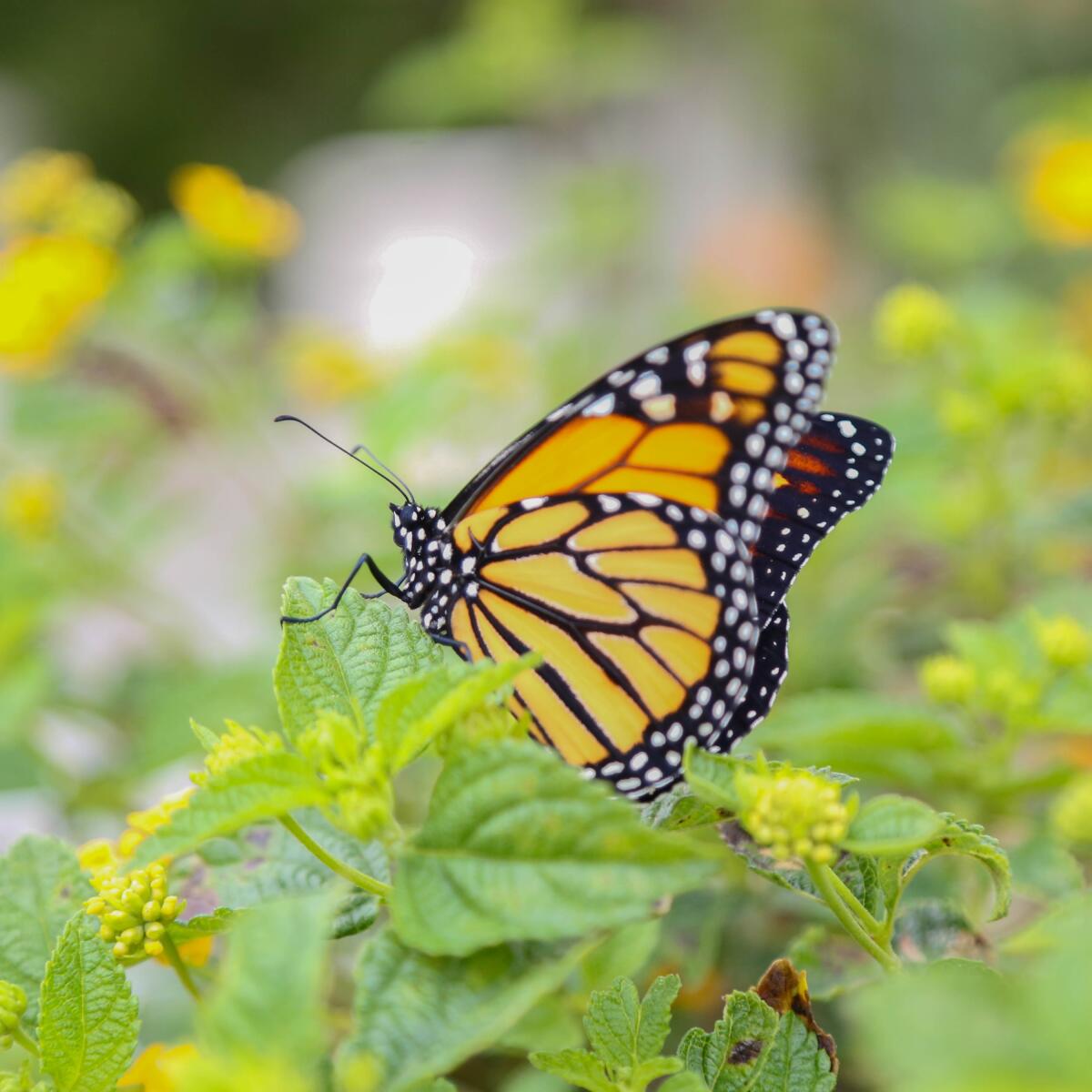
1. Learn from the pros how to plant a butterfly garden. If you want to attract butterflies to your yard, you must understand when they breed. UC Riverside’s master gardener docents tell all, detailing which plants are best and how the life cycle of butterflies works. Sessions take place 9 a.m. to noon on the first and third Sundays of the month (next one is Sept. 19) at the campus’ Botanic Garden. Free admission ($5 donation encouraged). More info here. Need more ideas for fall? Here are our picks for 12 things for plant lovers to do.
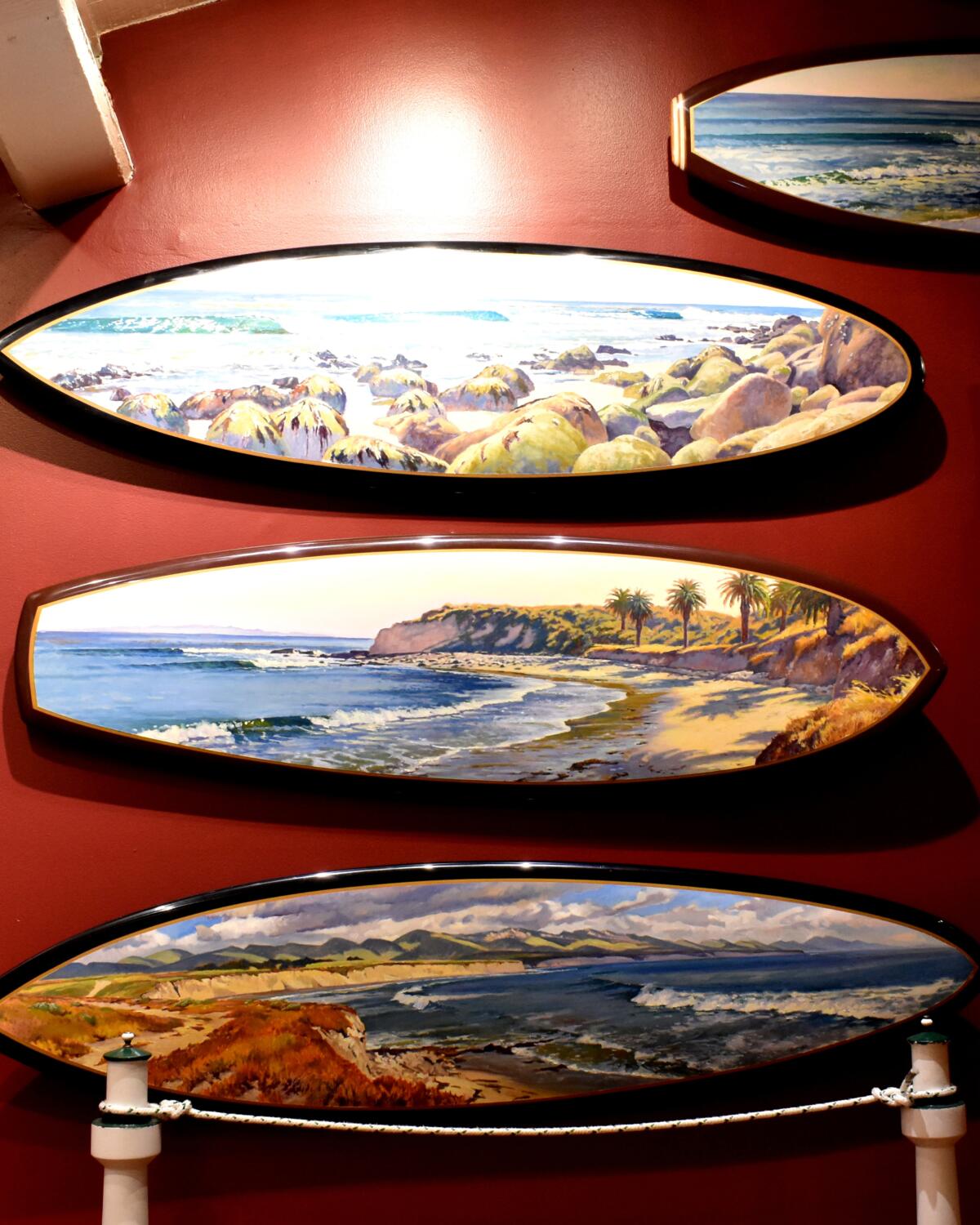
2. Get free tickets to museums on Museum Day. Museum Day 2021 is Sept. 18, when selected museums nationwide offer free admission. It’s a good time to sample places you’ve never been. Tickets are free, but you must download them in advance (two per email). Here are participating museums that focus on the outdoors in Southern California:
- Maritime Museum of Santa Barbara, where “Heritage, Craft & Evolution: Surfboard Design 1885-1959” is on display through Oct. 30.
- Channel Islands Maritime Museum, Oxnard.
- San Diego Archaeological Center, Escondido.
- EcoVivarium, a living museum in Escondido with turtles and monitor lizards, among other creatures.
The program is hosted by Smithsonian magazine. Find a list of participating museums and download tickets here.
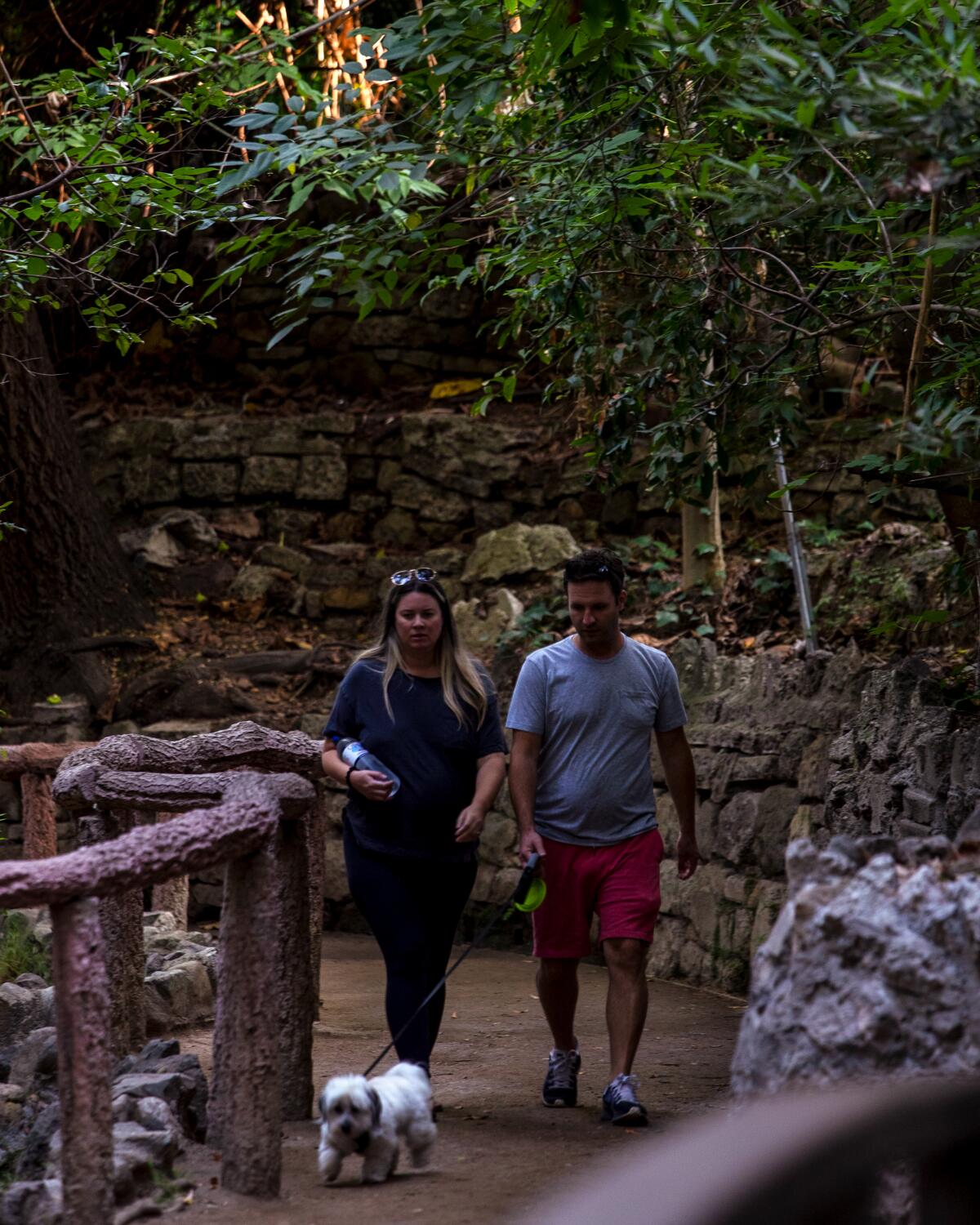
3. Help clean up one of Griffith Park’s most iconic gardens. I recently wrote about Fern Dell in Griffith Park, one of the best lush, shady retreats in L.A. Now you can take a hike and help tidy the area on a Friends of Griffith Park cleanup. No special skills are required; volunteers must be 12 or older. The group meets at the Trails Cafe at 5:30 p.m. Sept. 13. Register here.
The must read
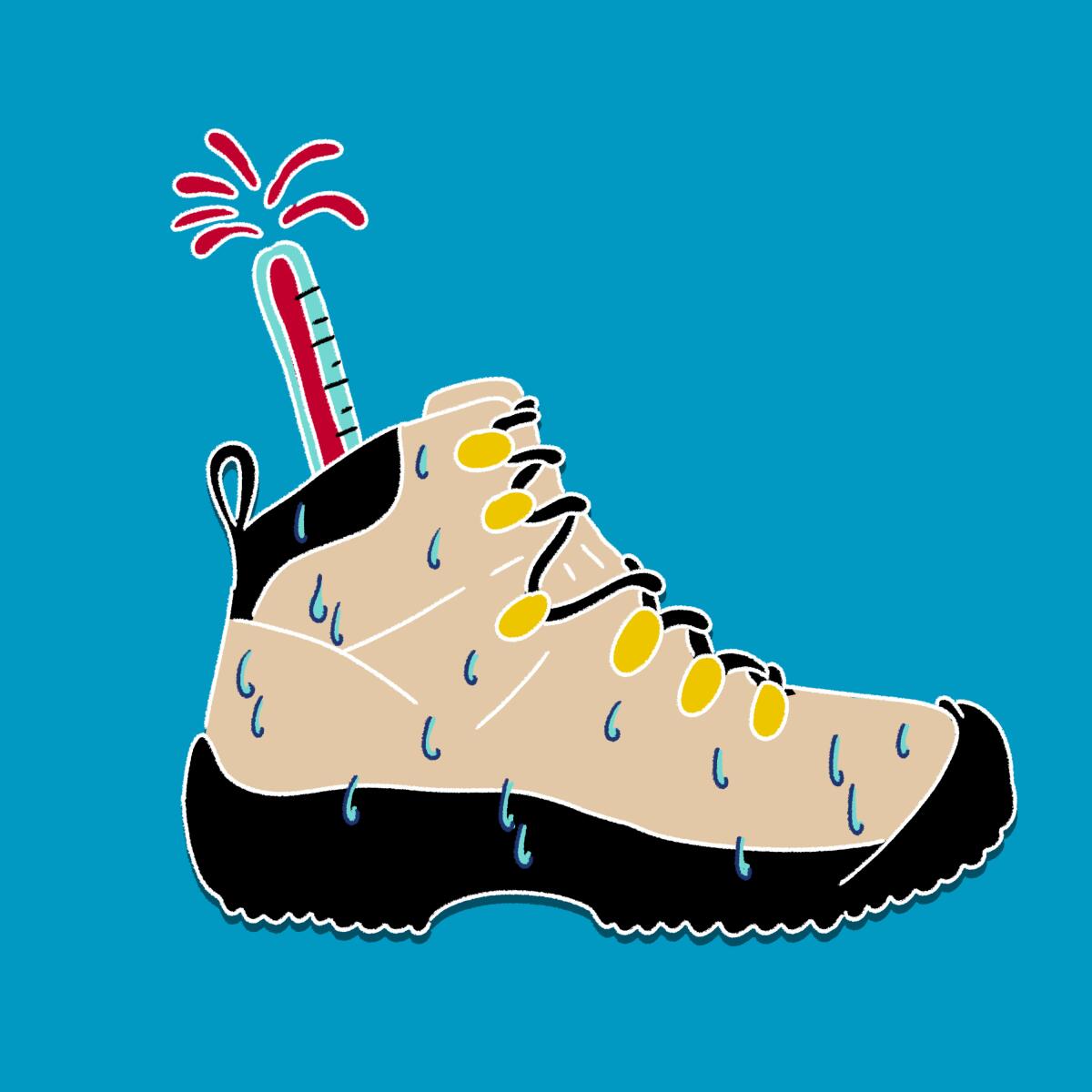
Three people died from heat-related causes in late summer in Death Valley National Park. Two were found on the same trail within a week. In an email, I asked park spokeswoman Abigail Wines how to safely hike in extreme heat. She answered my question with more questions anyone should ask before they go:
“How hot is it forecast to be? Will there be any shade? How long will it take them to get back to a cool location (such as an air-conditioned car) if they start to feel sick from the heat? Another question would be if the person thinking about hiking has been outside in the heat recently? If not, they probably aren’t acclimatized to it.”
She’s right. Death Valley’s temperatures aren’t typical for other parts of Southern California, but being acclimatized to high temperatures is definitely a plus. Wearing the right clothes and checking weather forecasts also are key. After speaking with more pros, I came up with a list of 14 essential tips for hiking in SoCal when it’s hot.
Social moment

When Marcin Zajac posted a photo of a fire in Yosemite National Park on Reddit a few weeks ago, reaction was swift. “You just gave me a heart attack!” was the most common refrain among the 236 comments. With epic wildfires across the state, people mistakenly thought the park was on fire. Which it wasn’t — but that doesn’t make the photo any less extraordinary.
Zajac shot the photo from Tunnel View around 10 p.m. on May 24 during a multiday controlled burn in the park. He wrote on Reddit: “Still, a surreal experience, especially when after taking this photo I drove back to my campsite on a road flanked by the fire from both sides and felt the emanating heat inside my car. The thick smoke didn’t seem to discourage climbers though; if you look carefully, you can see lights from their headlamps as they climb up El Capitan.” A user named lifelovers wrote: “Nice shot. Kind of not attractive to see fires at all, period, anymore tho.”
Not-so-wild things
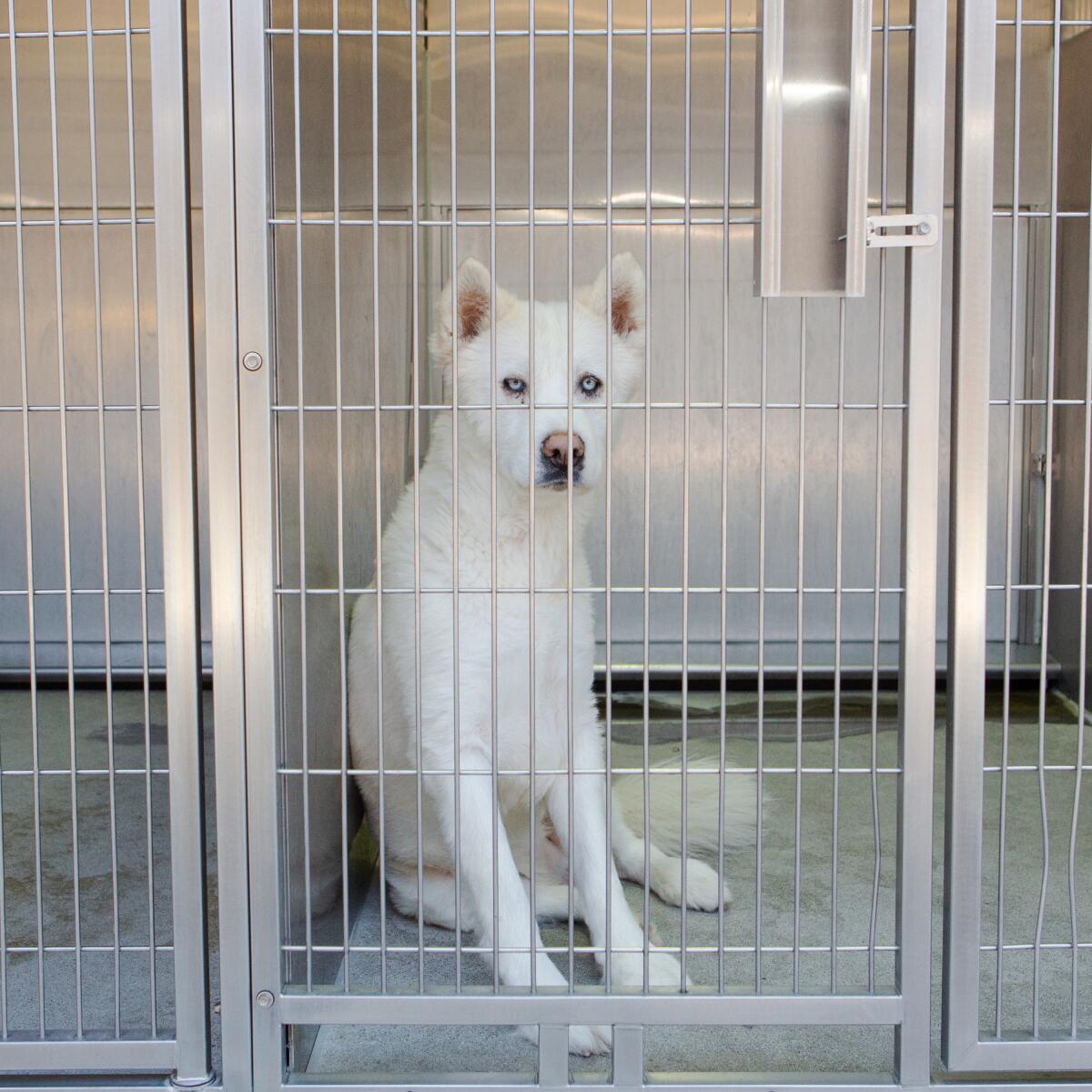
Thinking about adopting a pet or giving one up? L.A. County’s seven shelters are rewriting the rules. L.A. Times writer Jaclyn Cosgrove explains how a new approach called “managed intake” works.
“People who want to relinquish their dogs or cats must have an appointment, rather than just stopping by during business hours. Shelter workers then assess whether they can help the pet stay with its owner by providing assistance with veterinary bills, food, supplies, boarding or training for behavioral issues. If those options won’t work, owners are advised to look for another home, though the shelters will still accept the animals as a last resort.” Some like the approach; others bristle, saying it adds an obstacle for those who want to show up at a shelter and adopt. Read the full story.
Cool places

“Catch a wave and you’re sitting on top of the world.” That’s what the Beach Boys sang in 1963. It’s still true. Surfer and artist DJ Javier created a wave you can ride without getting wet. His newish mural at SeaVees retail store in Santa Barbara has become a place to snap a photo of yourself in the curl. It’s free too. Check out DJ’s story (yep, he also creates images of surfers with a vibrant, inclusive vibe) and his favorite Santa Barbara hangouts.
P.S.
A few weeks ago, I wrote about artist-author Obi Kaufmann and Wade Crowfoot, California’s secretary of natural resources, taking a walk in the Northern California woods to engage in a dialogue about the environment, including wildfires and water shortages. The walk — and the virtual program featuring a Q&A with them — has been postponed until 7 p.m. Sept. 30. More info here.
Send us your thoughts
Share anything that’s on your mind. The Wild is written for you and delivered to your inbox for free. Drop us a line at TheWild@latimes.com.
Click to view the web version of this newsletter and share it with others, and sign up to have it sent weekly to your inbox. I’m Mary Forgione, and I write The Wild. I’ve been exploring trails and open spaces in Southern California for four decades.

Sign up for The Wild
We’ll help you find the best places to hike, bike and run, as well as the perfect silent spots for meditation and yoga.
You may occasionally receive promotional content from the Los Angeles Times.




